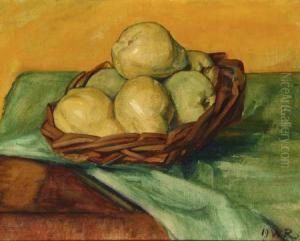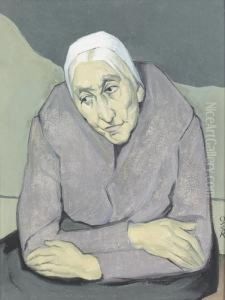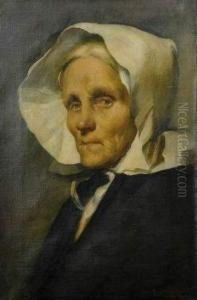Ottilie Wilhelmine Roederstein Paintings
Ottilie Wilhelmine Roederstein was a notable German-Swiss painter born on April 22, 1859, in Zurich, Switzerland. She grew up in a time when the art world was predominantly male-dominated, and opportunities for female artists were limited. Despite these challenges, Roederstein was determined to pursue her passion for art. She began her formal training at the age of 15 in Zurich and later continued her studies in Berlin under the tutelage of Karl Gussow, a German Realist painter.
Roederstein's early works were primarily portraits and still lifes, which were highly detailed and showcased her technical skill. She was influenced by the old masters, and her style was characterized by a meticulous approach to form and a rich, subdued palette. In 1882, she moved to Paris, which was then the epicenter of the art world. There she was exposed to the works of contemporary French artists and the evolving styles of Impressionism and Post-Impressionism. While in Paris, she studied with portrait painter Jean-Jacques Henner, who had a significant impact on her development as an artist.
Despite the vibrant art scene in Paris, Roederstein maintained her individualistic style, often oscillating between traditional and more modern approaches. She was skilled in both genre painting and portraiture, and her work demonstrated a profound understanding of human anatomy and emotional depth. Throughout her career, Roederstein actively exhibited her work, participating in major exhibitions in Germany, France, and Switzerland. She gained considerable recognition during her lifetime and was one of the few female artists to achieve success in the competitive art market of the late 19th and early 20th centuries.
In the 1890s, Roederstein established a long-term relationship with Elisabeth H. Winterhalter, a pioneering female doctor, and the couple eventually settled in Hofheim am Taunus, near Frankfurt, Germany. Their relationship was an integral part of Roederstein's life, providing her with emotional support and stability. The couple was known for their cultural salon, which became a meeting place for intellectuals and artists of the time.
Roederstein continued to work and exhibit throughout her life, adapting and refining her style. In her later years, she became more involved with the women's movement and supported the advancement of women in the arts. Ottilie W. Roederstein died on November 26, 1937, in Hofheim, leaving behind a legacy of perseverance and a body of work that remains significant for its contribution to the art of her era and its reflection of the evolving role of women in the arts.


